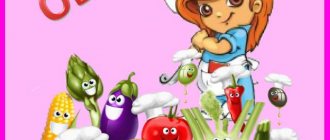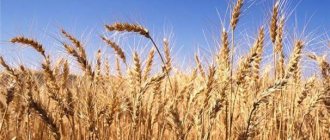Bulbous
A distinctive feature of bulbous plants is the edible underground part. It can be consumed both raw and processed. Due to their high content of caustic substances, bulbous plants are used as a prophylactic against colds.
Onion
Onion
This is a valuable perennial crop that provides the human body with a whole range of vitamins and minerals. All parts of it are considered edible. Onions have anti-inflammatory and antimicrobial properties. This plant is also used to normalize intestinal function and improve immunity. The juice is used to resolve bruises and scars.
Garlic
Garlic
Thanks to its unpretentiousness, garlic is cultivated all over the world. The perennial plant contains many useful substances that have a positive effect on human health. Garlic is used to remove parasites from the body, as well as in the treatment of colds.
How many types of vegetables are there?
Different types of peppers
Today, botanists identify about 350,000 types of vegetables. This includes crops that grow on all continents of the Earth, excluding Antarctica. There are 80 types of peppers alone. Such diversity is achieved through breeding work and various studies. Sometimes vegetables independently transform into new species due to local climatic conditions.
Interesting fact : vegetables are even grown in space. Similar experiments were carried out on potatoes on the ISS.
The meaning of vegetables
Vegetables are one of the most valuable food products for humans. They are the main source of saturating the body with carbohydrates, vitamins, phytoncides and other substances beneficial to health.
Lettuce plantation
Foods of plant origin are products that have a high energy component. The fact is that during photosynthesis, a number of chemical processes occur in vegetables, due to which nutrients accumulate in their tissues. Once in the human esophagus, they begin to split, which increases the overall tone of the body.
Vegetables are widely used to treat diseases. Their healing properties are recognized by both official and traditional medicine.
Cereals
They are high in protein and carbohydrates. The composition also includes a number of useful and easily digestible substances that have a beneficial effect on the human body.
Corn
Corn
This is a type of annual plant conventionally divided into 9 botanical groups. The stems can reach a height of 3 m, the growing season lasts up to six months. This is a heat-loving plant, demanding light and soil quality.
What are vegetables
Vegetables are plants that can be eaten. The term is most often applied to root vegetables, pumpkins and nightshades, because... fruits collected from bushes and trees are usually called fruits and berries.
Vegetables are an integral part of human nutrition. They contain vitamins, carbohydrates and other beneficial substances that are important for health. In summer they form the basis of many diets, and in winter they strengthen the body and supply it with the elements necessary for normal functioning.
Salad
These plants are often used in preparing various dishes. Salad vegetables are conventionally divided into leaf and cabbage varieties. They differ from each other in structural features.
Leaf lettuce
Lettuce
It is also called green salad. This herbaceous plant was already known in Ancient Rome. People appreciated it for its excellent taste. The leaves contain a lot of carotene, which has a beneficial effect on vision. Regular consumption of salad can prevent the development of Alzheimer's disease.
Tomato
The edible part of this type of vegetable is the berry, which is filled with seeds. They are well absorbed in the body and contribute to the normalization of the gastrointestinal tract.
Tomato
Tomato
This semi-shrub and very unpretentious plant is better known as tomato. It appeared in Russia only in the 18th century. Tomato contains a lot of useful substances that have a beneficial effect on the human body. Tomato bushes can reach a height of up to 2 m. Interesting fact: people have long considered tomatoes to be poisonous. In Rus', peasants even refused to plant them.
Legumes
This family differs from the rest in that the fruits of legumes are pods containing peas for food. They can be eaten both fresh and processed.
Peas
Peas
This is a perennial herbaceous plant that is eaten by people and animals. The fruits are pods reaching a length of 8 cm. The peas are round or angular in shape. Archaeological research shows that peas have been consumed by people since the Stone Age.
Interesting fact : green peas are the first vegetable to be canned in metal cans.
Beans
Beans
A perennial plant with fruits up to 20 cm long. It came to Europe after the Columbus expedition. Beans contain a large amount of protein, similar to that found in meat. In their raw form, many varieties of the plant are poisonous, so they must be subjected to heat treatment.
Lentils
Lentils
An annual plant native to Southern Europe. The stem can reach a height of 75 cm. Lentils are mentioned in the Old Testament. The plant contains a lot of easily digestible protein, as well as a number of vitamins and minerals.
Composition and benefits of vegetables
Vitamins contained in vegetables
Regular consumption of fresh vegetables has a positive effect on the human body. Plants are a major source of many nutrients not found in animal products. From vegetables, a person receives vitamins and acids, which increase visual acuity, improve immunity and stimulate brain activity.
The only thing that vegetables are poor in, with the exception of soybeans, is protein. A deficiency of this substance is observed in the body of many vegetarians. In addition to protein, soy contains vegetable fats, choline, lecithin and a number of vitamins and minerals.
Research shows that regular consumption of vegetables normalizes the functioning of the intestinal tract and prevents the development of putrefactive processes in the body. Thanks to them, the formation of harmful substances in the digestive tube is reduced.
Vegetables are a dietary product. It has a preventive and therapeutic effect. Thanks to vegetables, the body's resistance to infectious diseases and adverse environmental influences increases. Nutritionists recommend that when compiling a daily diet, 20-30% should be given to food of plant origin.
Pumpkin
This family has found wide application. Plants are used in many branches of human activity, from cooking to landscape design. About 600 types of vegetables are classified as pumpkin.
Pumpkin
Pumpkin
An annual plant of large size. Often used as a dietary vegetable. Pumpkin contains many useful vitamins, as well as potassium and iron. A substance is obtained from the plant that is used to combat tubercle bacilli.
Cucumber
Cucumbers
This annual plant has been cultivated for about 6 thousand years. Cucumbers appeared in Russia around the 16th century. The plant has a low calorie content, which makes it an indispensable component of almost all diets. The size of the fruit can reach 30 cm. Cucumbers can eliminate the acid imbalance of the body.
Zucchini
Zucchini
This is a bushy perennial plant native to America. The fruit size can reach 40 cm. Zucchini has a rich chemical composition, which includes many useful substances. The plant is able to remove excess fluid from the human body, which normalizes kidney function.
Squash
Patisson
An annual herbaceous plant used in cooking. The name can be translated from French as pie. This is a bush-shaped plant with small fruits. They are consumed both raw and processed. Patisson is very demanding of moisture and soil, as well as heat. The plant reproduces by seeds.






